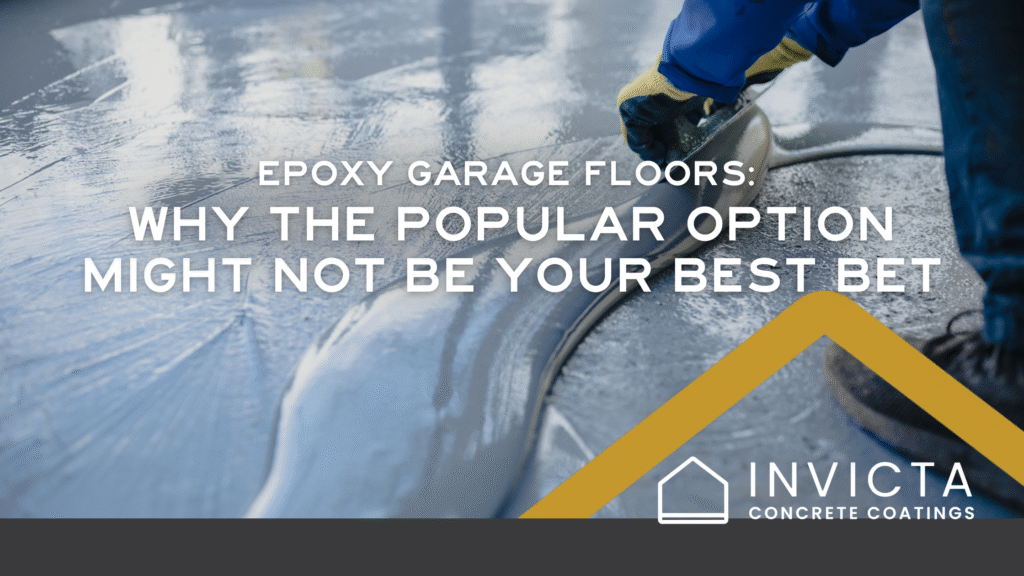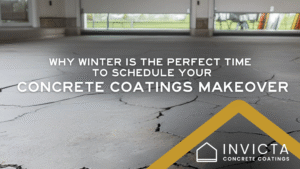If you’ve been thinking about upgrading your garage, chances are you’ve come across epoxy flooring. It’s one of the most talked-about options out there. People love how shiny it looks, how easy it is to clean, and how it seems to turn a regular garage into something straight out of a car showroom.
Here’s the thing: epoxy garage floors aren’t always as great as they’re made out to be. In fact, for a lot of homeowners, this can end up being more of a headache than a helpful upgrade.
Let’s break down why this popular option might not actually be the best fit for your garage.
It Looks Great… But Doesn’t Always Stay That Way
When epoxy is freshly applied, it looks fantastic. Smooth, glossy, and clean; it definitely gives your garage a polished look. However, that perfect appearance doesn’t always last.
Over time, especially with daily use, epoxy floor coatings can start to show wear and tear. If you drive in and out regularly, especially with hot tires or during wet and muddy seasons, the surface can start to peel or lift. This is known as “hot tire pickup,” and it’s a common issue. Your tires heat up as you drive, and when you park, that heat can cause the epoxy to soften and stick to the tires. When you back out, some of the coating can come with it.
It’s Not as Durable as It Seems
Epoxy is often advertised as a super durable material, and while it does resist stains and spills, it’s not indestructible. If your garage floor has any cracks or moisture issues, that can cause problems later on. Epoxy doesn’t handle moisture well. If water is trapped underneath or seeps up through the concrete, it can cause the coating to bubble or peel.
If your garage is exposed to extreme temperature changes like freezing winters or very hot summers, epoxy might not hold up as long as you’d like.
Installation Isn’t a Simple DIY Job
One of the biggest surprises for people is how much work goes into installing an epoxy floor properly. You can’t just roll it on like paint. The concrete has to be completely clean, dry, and often needs to be ground down so the epoxy can stick properly. Any oil, dust, or old paint on the surface can mess up the whole process.
Doing it yourself without the right tools or experience can lead to poor results. Hiring a professional is often more expensive than people expect.
Repairs Can Be a Pain
Once epoxy starts peeling, cracking, or bubbling, it’s not easy to fix. You can’t just patch a small area without it looking obvious. In most cases, you’ll need to sand or grind off the damaged parts and reapply the epoxy which usually means redoing the entire floor.
While it might seem low maintenance at first, keeping epoxy looking good long-term can be more work than you bargained for.
There Are Better Alternatives
The good news is, epoxy isn’t your only option. Newer coatings like polyaspartic are more flexible and resistant to temperature changes and moisture. They also cure faster and tend to last longer.
Another option is rubber mats or garage floor tiles, such as Swisstrax. These are easy to install, require almost no prep, and if one piece gets damaged, you can just replace that section with no need to redo the whole floor.
Final Thoughts
Epoxy garage floors have their place, and they do look great at first. However, before you jump in, it’s worth considering the downsides. Between tricky installation, the potential for peeling, and long-term maintenance, epoxy might not be the easy upgrade it’s made out to be.
Take a little time to think about how you actually use your garage and what kind of wear and tear it sees. A different flooring option might suit your space and your wallet a whole lot better.




